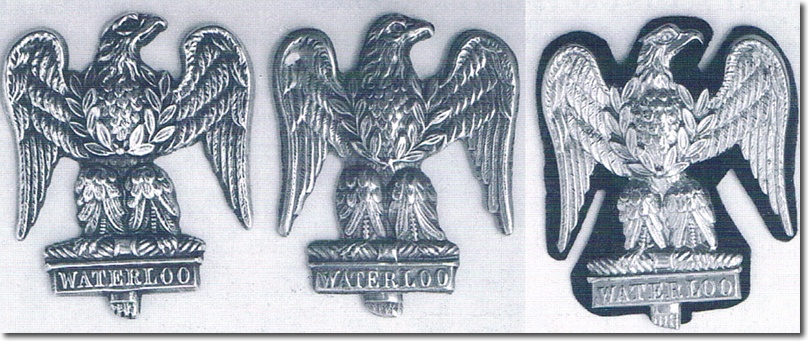|
|


|
|
Badges worn by NCOs above their stripes was usually unofficial until approval was granted. In the case of the Greys the silver badge of the Eagle, although it had been a badge of the regiment since 1835 when it was used on their buttons, and 1838 when the regiment was permitted to have the Eagle on their guidons, did not receive approval for the arm badge until 1891. However a photo of a TSM Rough Rider of 1886 shows the badge above his stripes so it may have been worn earlier, but only by staff sergeants and above at that stage. It wan't until 1898 that the badge was Sealed and allowed to be purchased at public expense.' Up until then the sergeants had to buy their own badge. Corporals in the Greys did not wear the badge.
The photo of three examples comes from Cavalry Warrant Officers' and Non-Commissioned Officers' Arm Badges by David Linaker and Gordon Dine. The Eagle on the left is silver, hall-marked 1896. The centre Eagle is of white metal, struck from a hollow die. It may have been silver plated originally. It dates at around the same year as the silver badge. The badge on the right is white metal but solid with a flat back and probably worn before WW1. The black cloth backing was added after WW1 as a sign of mourning for Tzar Nicholas their Colonel-in-Chief, who was killed by the Bolsheviks in 1918. These badges measure 48mm high by 40 mm wide. |
Armed Forces | Art and Culture | Articles | Biographies | Colonies | Discussion | Glossary | Home | Library | Links | Map Room | Sources and Media | Science and Technology | Search | Student Zone | Timelines | TV & Film | Wargames